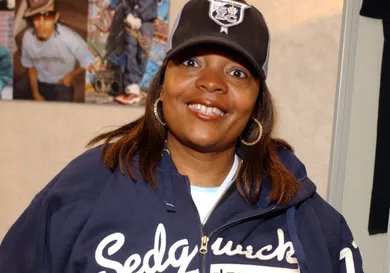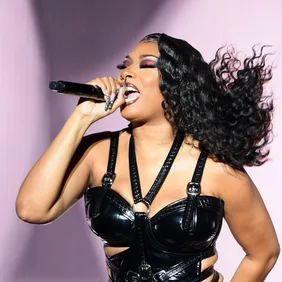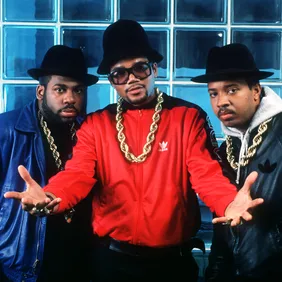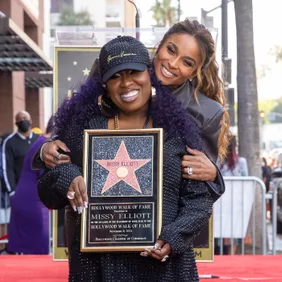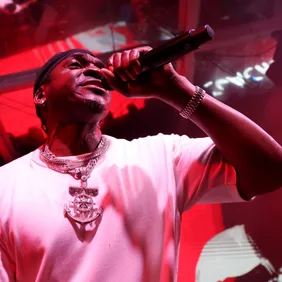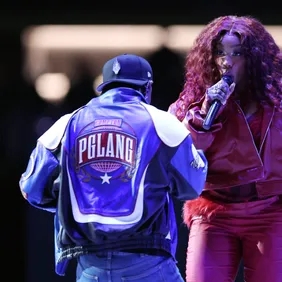In many ways, catching onto the inklings of hip-hop was a matter of chance. You just had to be there. That was the case for one of the pioneers of hip-hop, Sha-Rock. Widely considered the first female rapper, the then-teenager was riding city buses and writing poetry amongst the bustling streets of New York throughout the late 1970s. In those days, being an MC meant being a part of a crew. Through complete chance, she would find that in the form of pioneer rap group Funky 4+1. However, Funky's "+1" moniker didn't arrive until Sharon Green, more commonly known as rapper Sha-Rock.
While walking through South Bronx, she was approached by a member of The Funky group. A few hours later, she was in front of a group of musical managers. Over time, Sha-Rock would morph into the "secret weapon" of Funky 4+1. "I was always their secret weapon. A lot of other groups were scrambling, trying to find female MCs who could deal with Sha-Rock," she said. Curating hits in the form of "Rapping and Rocking the House" and "That's the Joint," she quickly became an essential member of the quintet of MCs.
Rapper Sha-Rock Innovated The Hip-Hop Genre
As member Rahiem puts it, rapper Sha-Rock's influence was key to the group's success. "That's to calm the wolves down," he once said. "We need that during that time period. Living in the Bronx in the '70s, there was going to be a shootout or a stabbing, or we were going to get robbed." Sha-Rock kept the group locked in, acting as the stand-out member. Funky 4+1 laid the foundation for hip-hop culture, setting the example for MCs across the United States. Growing up, poetry was a creative outlet for Sha-Rock. In fact, that innate talent as a creative writer was a big reason why she was able to land a gig with the Funky group. That talent quickly translated into her verses, inspiring other MCs to up their pen game.
Sha-Rock became known as the founder of a vocal technique known as the "echo chamber." By the early 1980s, she had become synonymous with cassette types being distributed throughout the East Coast. At the time, hip-hop's sound was still very much engrained in the worlds of soul and R&B. Therefore, Sha-Rock's influence was primarily in the lyrical space. Outdoing many of her male contemporaries, she set the bar. Run-DMC's Darryl McDaniels stated, "The voice was so distinctive - but it sounded stronger, more grounded, more versatile, more unique, more impressive than all of the dudes that I have heard up to that point."
Sha-Rock Inspired Run-DMC
Sha-Rock's "echo chamber" vocal pallet would directly impact Run-DMC, who would use the style on several future albums. Particularly, Sha-Rock's hit success as a female MC would inspire other women to dive into the rapping world. Even in the early days of hip-hop, the sound was connotated with aggression and violence. As a result, many tended to associate the sound with masculinity. Sha-Rock dispelled this, proving that hip-hop could exist in a world of peace and happiness rather than hostility. A few years later, the likes of MC Lyte and Queen Latifah were blowing up onto the scene.
Funky 4+1's standout moment happened on Saturday Night Live. While the group was on tour, manager Sylvia Robinson got a call for the hip-hop group to perform on the show along with the rock band Blondie. Funky 4+1 would later find out that having Sha-Rock as a member was a key reason for the group being chosen to perform above other upcoming hip-hop acts, such as The Furious 5. Their live performance was a defining moment for hip-hop, exposing many viewers to the genre for the very first time.
Sha-Rock Proved That Hip-Hop Wasn't A Male Genre
In 2010, Sha-Rock published The Story of the Beginning and The End of The First Hip-Hop Female MC: Luminary Icon Sha-Rock. An autobiography about her life before and after rap, her goal was to bring light to the early days of hip-hop and, more specifically, Funky 4+1. The story paints the story of an 18-year-old Sha-Rock navigating the rise of the hip-hop world and her stardom. From becoming pregnant to dealing with persisting stereotypes of women throughout the industry, the autobiography was a full-circle moment for Green, who had always been a writer at heart.
Because of Sha-Rock's presence at the birth of hip-hop, the genre quickly became associated with both men and women. While women in rap have to navigate persisting stereotypes to this day, there's no doubt that Sha-Rock broke down barriers far quicker than if Funky 4 had remained so. In addition, her energetic flows and pioneering of the "echo chamber" effect made it clear that women would continue developing the hip-hop genre for decades.
